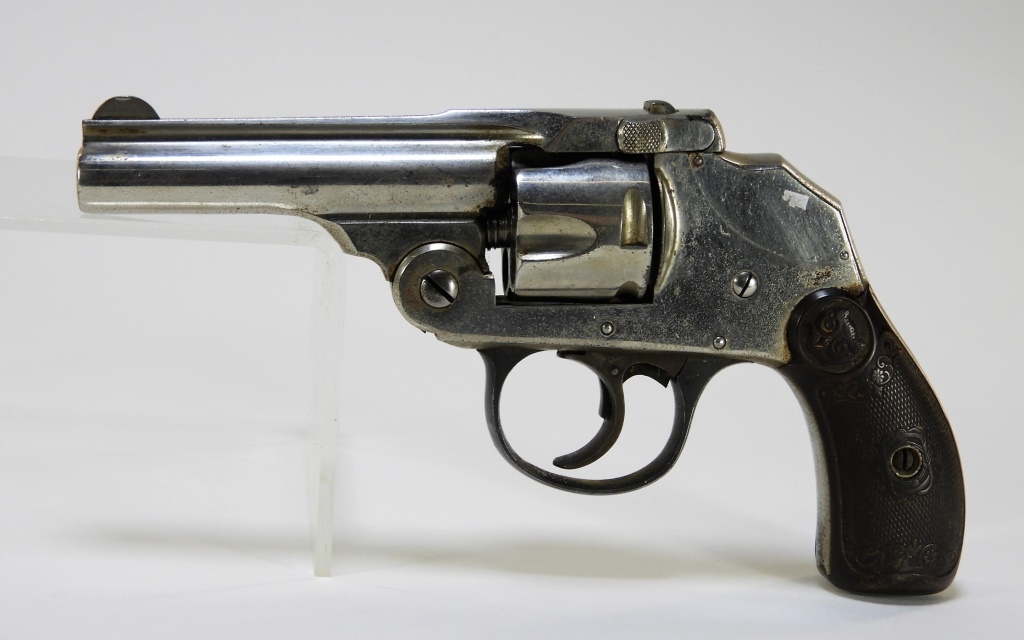

The gun does shoot slightly high, so a 6-o’clock hold should be used. Slow, deliberate fire produced significantly better group. Sits very low in the hand and points quite naturally.

The smoothness of the trigger outweighs the heaviness, and the gun sits very low in the hand this not only minimizes the already trivial recoil but makes the gun point very naturally. So, how does it shoot? Pretty well, actually. Many arms of this type and period were bought, loaded and tucked in a drawer, then largely forgotten. I suspect that this gun was seldom, if ever, fired. The bore is acceptable, with some light pitting, and the chambers are pristine. The nickel on the frame is in quite good condition, the barrel rather less so, with significant loss of the plating in front of and above the cylinder.
Iver johnson top break safety hammerless model one 1894 serial number#
The gun’s serial number indicates it was from the first year of production- 1894 or 95, depending on who you ask. All of the internals are accessed either from the bottom by removing the trigger-guard, or from the top by removing the hammer-shroud. The gun has a one-piece frame with no sideplate. I have large hands but the grip is only slightly awkward for me I may or may not remedy this with a custom grip. It locks up very tight and the trigger, while quite heavy, is very smooth. Hey, acknowledging that there is a problem is the first step, right? Anyway I eventually looked at it and was surprised and impressed at the quality. It was there for months but I had little interest because… well, because it was an Iver Johnson and when it comes to top-breaks I am a total S&W snob. I found this gun at Pinto’s Guns in Renton, WA. I expect that this was done in the interest of cost savings the original lock was stronger and more fool-proof. Both of these features were eventually discontinued the trigger-safety was removed and the lock was replaced with a simple T-Bar lock similar to S&W revolvers of the period. The locking mechanism is very strong, using a single side-lever to turn a solid bar to disengage. It uses their famous transfer-bar safety, and additionally has a trigger-safety that would later see use on the uber-popular Glock semi-automatic pistols. The gun we are discussing is an Automatic Safety Hammerless Model 1. They advertised prolifically, with a strong emphasis on the safety of these guns. In succeeding years they made inexpensive solid-frame revolvers and single-barrel top-break shotguns as well. They were nothing if not prolific they made 100,000 revolvers in their first year of production, which sold, depending on the model, for $4-$8. The Automatic portion of the name referred to the fact that it automatically ejected the cartridges when the revolver was opened. The ‘Safety’ referred to the use of a transfer-bar safety, which allowed the gun to be carried with the hammer down on a loaded chamber. In 1894 launched the production of their ‘Safety Automatic’ revolvers, and shortly thereafter launched hammerless versions of these guns. Iver Johnson’s Arms and Cycle works was formed under that name in 1891 in Fitchburg, Massachusetts.


 0 kommentar(er)
0 kommentar(er)
